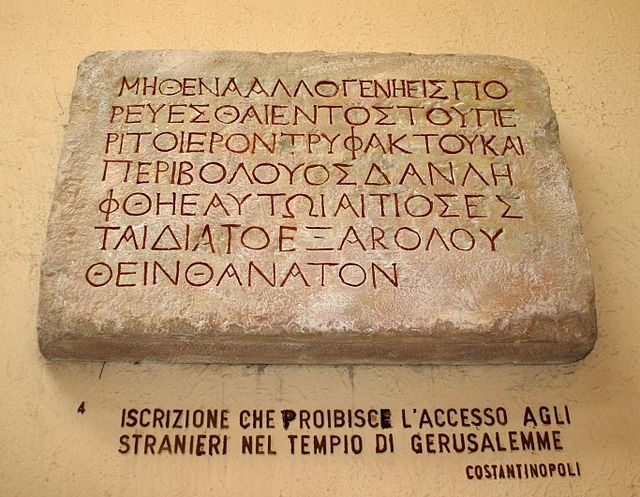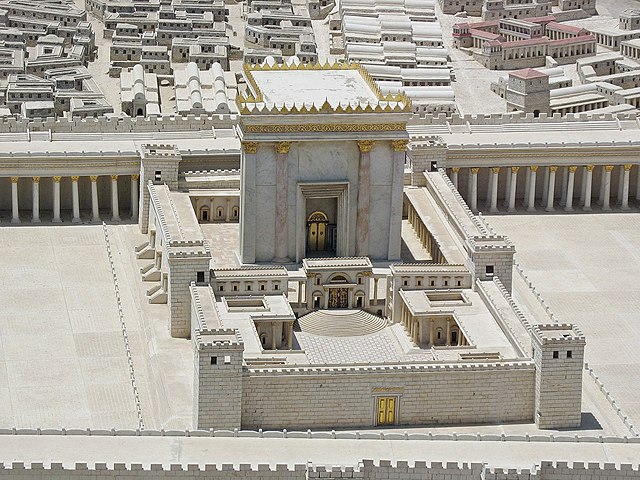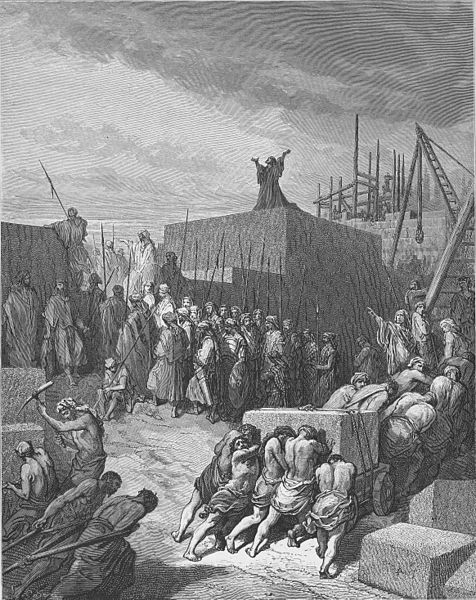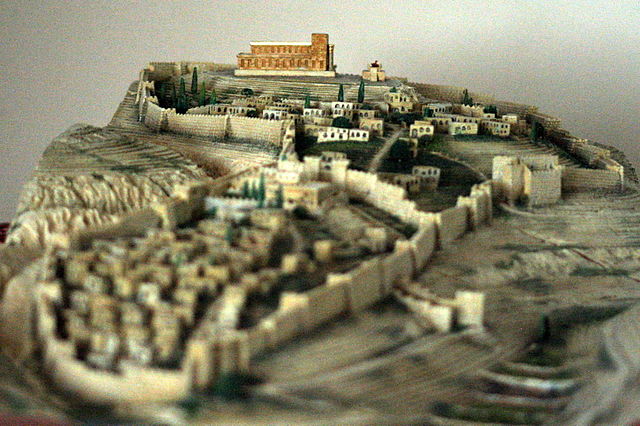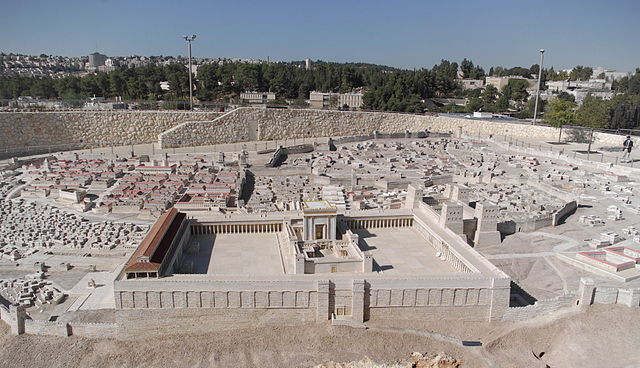Temple Warning inscription
The Temple Warning inscription, also known as the Temple Balustrade inscription or the Soreg inscription, is an inscription that hung along the balustrade outside the Sanctuary of the Second Temple in Jerusalem. Two of these tablets have been found. The inscription was a warning to pagan visitors to the temple not to proceed further. Both Greek and Latin inscriptions on the temple's balustrade served as warnings to pagan visitors not to proceed under penalty of death.
Fragment of the inscription at the Israel Museum.
A copy of the inscription at the Museum of Roman Civilization in Rome.
The Second Temple, later known as Herod's Temple, was the reconstructed Temple in Jerusalem between c. 516 BCE and 70 CE. Defining the Second Temple period, it stood as a pivotal symbol of Jewish identity and was central to Second Temple Judaism; it was the chief place of worship, ritual sacrifice (korban), and communal gathering for Jews. As such, it attracted Jewish pilgrims from distant lands during the Three Pilgrimage Festivals: Passover, Shavuot, and Sukkot.
Model of Herod's Temple (inspired by the writings of Josephus) displayed within the Holyland Model of Jerusalem at the Israel Museum
Rebuilding of the Temple (illustration by Gustave Doré from the 1866 La Sainte Bible)
Modern-day reconstruction of Jerusalem during the 10th century BCE, showing Solomon's Temple, which was on the site prior to the building of the Second Temple.
Herod's Temple as imagined in the Holyland Model of Jerusalem; east at the bottom


